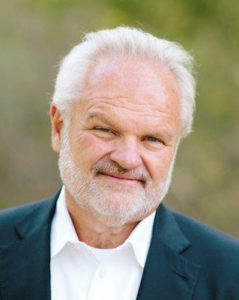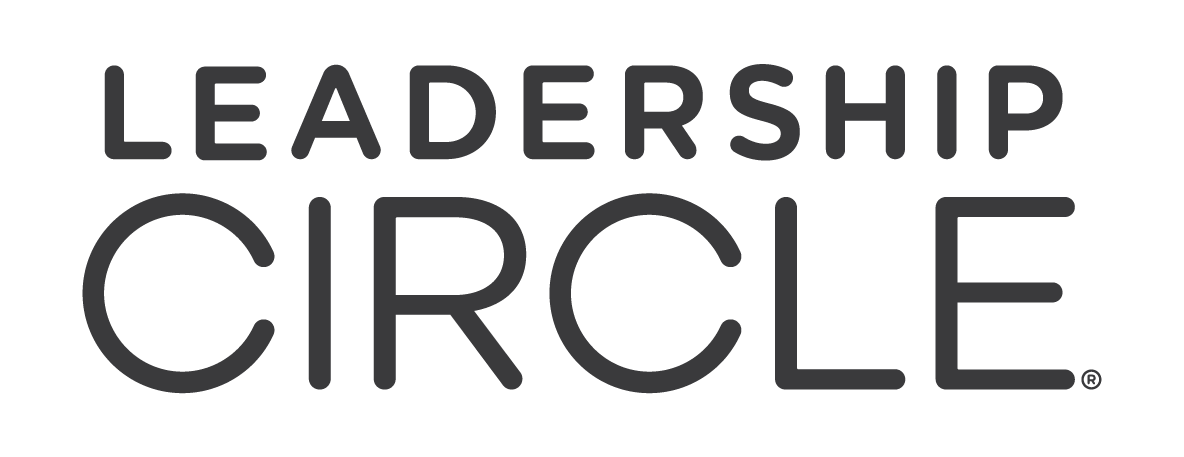Leaders are experiencing expanding global competition, accelerating pace of change, mind-numbing complexity, and increasing instability. We work with leaders all over the world and most are seeing a growing gap between the rate at which complexity is increasing and their own capacity to lead.
This leaves us with the questions; How will we rise to the occasion? Can we look past what worked in the past, see through assumptions, and find new ways to meet our challenges? How can we best develop leaders who can overcome challenges and capitalize on opportunities? After over 30 years working as a Leadership Consultant that has been primarily focused on Business Performance and Effective Leadership I have learned a very simple truth;
“Effective Leaders Outperform Ineffective Leaders Every Time.”
I evoke this learning in board rooms, in my C suite role, and in almost every leadership setting I am in. I never receive any argument or push back when I make this statement and ask if it is true? Everyone agrees! My follow up question is always; if this is true why is it that we spend such a minimal amount if any of our resources on developing leaders. Developing leaders is the most pertinent agenda item for any CEO. It is the key business imperative of our time. The CEO or top leader in any organization is primarily responsible for ensuring that leadership is developed and capitalized on. They own it, leadership is their job.
Leadership is a sustainable competitive advantage.
Preserving this competitive advantage means that leaders must develop at a rate that keeps pace with accelerating global change. Development challenges our most cherished beliefs and assumptions. We must cultivate a new mindset from which responsive strategies will flow—higher-order operating systems that require us to master the inner-world (consciousness) and the outer-world (competence). Business performance is directly tied to effective leadership, and the most effective leaders are conscious, authentic leaders. One of our colleagues recently told a CEO that she had to be the most self-aware person in the organization. And then, he took it a step further by saying that the Top Leader needs to be the most self-aware of anyone in his or her organization, and all other leaders must follow their example.
Authentic leaders create cultures of commitment.
Most people enthusiastically support only what they’ve had an active hand in creating. Disengagement is a huge financial cost, as it deadens spirit, passion, innovation, purpose, and commitment. It squanders capability and capacity. Ineffective leaders speak of the culture as if it is out there somewhere—separate from them. In reality, culture reflects how we lead. Great leaders create great cultures of engagement for all stakeholders. A healthy, vibrant, high engagement culture is a powerful force for gaining and sustaining desired results.
Leadership is an inside-outside game.
Leaders have to look in to see out. How we think about things impacts what we do. In today’s frenetic world, we’re often so busy doing things that we don’t notice our thinking—our Inner Operating System, which then takes on a life of its own and it is often hidden from our view. We are caught in our own habitual patterns, without noticing, at high cost since the inner life impacts personal effectiveness, creativity, innovation, and performance.
The best top leadership teams are all about results and relationships.
The best of them leverage tremendous business capability, tap into deep wells of personal and collective knowledge, actively seek strategic interdependencies and relationships, and at their core function together in a circle of key leadership processes. Top teams must ask the question how effective are we individually and collectively as leaders? How do we know and what are we going to do about it?
Effective Leadership and Performance
Great leadership is indeed a competitive advantage, and high performance is achieved and sustained through effective leadership practices applied with discipline over time.
High performance requires both organization design and key leadership processes and disciplines.
Design
The performance of any system is primarily determined by its design. An optimal design fosters fit for purpose. Fit for purpose design answers three critical questions:
1) Vision/Value. What is the unique value that the organization brings to its customers so that they gain greater competitive advantage? What do we do? For whom? Why? In support of creating unique value, what principles guide the quality of our work and how we work together?
2) Strategy/Approach. In what distinctive manner do we choose to fulfill the unique needs of our customers—and key stakeholders? What is the distinctive strategy or central capability that we emphasize to support the vision and achieve competitive advantage?
3) Structure/Base. What is the designed alignment of structure and strategy, technology and people, practices and processes, leadership and culture, and measurement and control within the enterprise? How are these elements designed and aligned to create conditions that support achieving the vision?
Processes
Key leadership processes translate organizational identity into execution and high-performance to fulfill the promise of leadership. Such processes include these:
Strategy to Execution
Strategy without execution is a plan on the shelf. Activity without a clear tie to a well-grounded strategy is wasted activity. Here is how you can address the keys to strategy execution:
-
- Identity: Invest in building a strong, aligned leadership team. You want these individuals to be grounded in a common purpose, vision and values. This is developed by working together on enterprise issues with unwavering commitment to on-going personal leadership and team development.
- Strategy: Outline a clear mid-to-long-term directional strategy and a short-term operating plan, with accountability for goals and actions in pursuit of clear strategic objectives.
- Alignment: It is paramount to have shared strategic line-of-sight and rapport across the top three levels of management, engaging others whose voice, perspective and diverse view of what’s real is critical.
- Accountability: Performance accountability systems clarify what is expected of people and align consequences for efforts with actual performance. Until leaders work together to refine their Key Processes and execute on them with daily discipline, they won’t achieve high performance and sustainable results. Organizational identity must be translated into strategy, and strategic direction must be translated to objectives, goals, actions and accountabilities. All this must be done in a way that cultivates a culture of engagement since high-performance execution requires passionate commitment. Process without results is worthless. Results without process are unsustainable.
Business Rhythm
A Business Rhythm involving metrics, reviews and course corrections keep the business on track. Every activity has a rhythm to it. A heartbeat, a daily set of rituals, a seasonal harvest cycle, an annual calendar, a story, a song, all have an identifiable cadence. Leaders must establish and maintain a cadence for the business (continually running flat out in all directions, all the time, is not the optimal business rhythm). Effective leaders find ways to step back, reflect, and then reengage with a more lean and disciplined process.
Create a Business Rhythm management cycle that involves the following leadership processes: track progress against strategy and planning; review status on operational results through clear key metrics; update the strategy regularly; ensure action is being driven by insight based on relevant, current information; and maintain focus on achieving the vision. Senior leaders need to build discipline and depth into their leadership process and management cycle. If these elements are mastered, the result will be accountability, predictability, ongoing learning, renewal and sustainability from the top to the bottom of the org.
Operational Performance
Every organization needs effective operations. For some, it is their claim to fame in the marketplace. For others, it is merely the price of admission. The best organizations develop simple processes that are internally efficient, locally responsive, and globally adaptable. If complexity is removed from the customer experience, you enable your customers to engage with your brand in ways that are both elegant and satisfying. Establishing and optimizing operational performance is an ongoing journey. Operational teams need to be focused on the most important work, using the most effective, proven techniques to get the work done. This means aligning initiatives and operations with strategy and continuously improving day-to-day operations. Pursuing performance breakthroughs using proven approaches enhances the customer experience, while using advanced change techniques supports major initiatives. It is key that operational leaders establish a recognizable pattern of executive sponsorship for all initiatives while building future capability and capacity.
Strategic Communication
To put it simply, everything that happens in an organization happens in or because of a conversation. Whether it takes place between a clerk and a customer, among a team of supervisors changing shifts, in a town hall meeting where executives address employees, or in the boardroom, every exchange is a potential moment of truth – a point of failure or a critical link in the chain to success. Strategic Communication is more than telling others what you want them to hear. Above all, it is ensuring that the impact of your message is consistent with your intention. Most importantly, it is key for you to check that understanding takes place. What you say, the way you say it, where, when and under what circumstances shapes the performance culture of the organization.
When leaders maximize their contribution to the conversations taking place every day in the company, they engage and align people around a common cause. This leadership behavior reduces uncertainty; keeps people focused; and equips people for moments of truth that create an “on the table culture.” Stay connected to reality and prevent excuses before they happen. In this way, you and your teams will learn from experience as you treat mistakes like intellectual capital. Use this learning to leverage the power of leadership decisions in shaping beliefs and behaviors.
All things considered…we work with leaders to ensure conversations are candid, authentic, and purposeful. When utilizing our methods, leaders are able to increase their influence, accelerate progress toward strategic objectives, and manage change with greater focus. For all parties involved, this propels a spirit of resolution, calm, clarity, and persistence.
About The Author

CEO Full Circle Group & The Leadership Circle
william.adams@fcg-global.com
Bill brings thirty years of leadership development experience to his clients – the CEOs of major Fortune 500 corporations, non-profits and private equity start-up businesses. As a consultant, trusted advisor and coach, he works with senior executives in the areas of strategy, alignment, performance and leadership effectiveness. Bill’s expertise is working with clients to lead large-scale change and cultural transformation within their organizations.





I found some of the best lessons about leadership in your article. A must read for every leader. I agree, that genuine leaders are able to create cultures of commitment. Commitment is a quality that when possessed overcomes major issues and hurdles any organization is bound to face. Commitment is making time when there is not, it transcends the impossible. Great thoughts well written in this article. 🙂
Bill, Congratulations on a truly wonderful article. I am proud to be your partner.